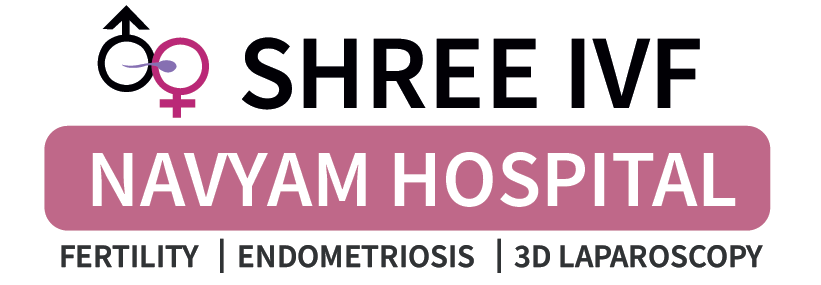
What is Endometriosis?
Endometriosis is a painful disease. This disease develops when the endometrial-like tissue acts as a wound; thus, it thickens and bleeds at the time of menstruation.
But it does not find any exit and gets trapped, forming underlining. It grows inside the uterus, and the endometrium grows outside the uterus. Endometriosis can develop in your fallopian tubes, ovaries, and in the lining of the pelvis.
In extreme situations, Endometriosis can grow an infertility problem. Endometriosis can cause severe pain at the time of menstruation.
🌸 What is Endometriosis? A Comprehensive Guide with Treatment Approaches
Endometriosis is a chronic medical condition where the tissue that normally lines the inside of the uterus (endometrium) grows outside the uterus. This misplaced tissue commonly affects the ovaries, fallopian tubes, and the pelvic lining, but it can also spread to other organs. The condition can cause severe pain, irregular periods, and infertility.
Endometriosis affects around 10% of women of reproductive age worldwide. Though it is a common condition, it is often misdiagnosed or undiagnosed due to its complex symptoms. Fortunately, several advanced treatment methods like laparoscopic and robotic surgery, hormone therapies, and fertility preservation techniques have improved the management and outcomes for women dealing with endometriosis.
🩺 Symptoms of Endometriosis
The symptoms of endometriosis can vary from mild to severe and may include:
- Pelvic pain: Often associated with menstrual cramps but can occur at any time.
- Pain during intercourse: Pain or discomfort during or after sex.
- Heavy or irregular periods: Excessive menstrual bleeding or spotting between periods.
- Infertility: Difficulty in conceiving due to endometrial tissue affecting the reproductive organs.
- Bowel and bladder issues: Painful urination or bowel movements, especially during menstruation.
- Fatigue, bloating, and nausea: Common during menstrual cycles.
🔍 Diagnosis of Endometriosis
Diagnosing endometriosis involves:
- Pelvic exam: To check for abnormalities like cysts or scars.
- Ultrasound or MRI: Imaging tests to identify endometrial growths.
- Laparoscopy: A minimally invasive surgical procedure to confirm the diagnosis by directly visualizing the tissue.
🌟 Advanced Treatment Approaches for Endometriosis
1. Laparoscopic and Robotic Surgery
Laparoscopic and robotic surgeries are minimally invasive techniques used to diagnose and treat endometriosis.
✅ Laparoscopic Surgery:
- Involves making small incisions in the abdomen.
- A thin tube with a camera (laparoscope) is inserted to view and remove endometrial tissue.
- It reduces scarring and offers faster recovery compared to open surgery.
- Suitable for mild to moderate endometriosis.
✅ Robotic Surgery:
- Utilizes a robot-assisted system controlled by the surgeon.
- Provides enhanced precision and flexibility.
- Ideal for complex or severe cases of endometriosis.
- Reduces the risk of complications and improves surgical accuracy.
✨ Benefits of Laparoscopic and Robotic Surgery:
- Less invasive with minimal scarring.
- Reduced post-operative pain.
- Quicker recovery and return to normal activities.
- Improved outcomes in terms of fertility preservation.
2. Endometriosis and Dior Therapy
Dior therapy refers to the use of Dienogest, a progestin-based medication that treats endometriosis by:
- Reducing the growth of endometrial tissue.
- Relieving pelvic pain and inflammation.
- Suppressing the production of estrogen, which fuels endometriosis growth.
- Improving quality of life and reducing the recurrence of symptoms.
3. Endometriosis and Elagolix
Elagolix is an oral gonadotropin-releasing hormone (GnRH) antagonist used to treat moderate to severe endometriosis pain.
✅ How Elagolix Works:
- Lowers estrogen levels by suppressing ovarian function.
- Reduces inflammation and pain caused by endometrial tissue growth.
- Effective for pain management and symptom control.
⚠️ Potential Side Effects:
- Hot flashes, mood swings, and headaches.
- Decreased bone density with long-term use.
4. Endometriosis and Lupron Depot
Lupron Depot is an injectable form of Leuprolide acetate, a GnRH agonist used to treat endometriosis.
✅ How Lupron Depot Works:
- Temporarily reduces estrogen levels, inducing a menopausal state.
- Shrinks endometrial growths and alleviates pain.
- Often used as a pre-surgical treatment to reduce tissue size.
⚠️ Potential Side Effects:
- Bone thinning and osteoporosis with prolonged use.
- Hot flashes, mood changes, and vaginal dryness.
- Temporary reduction in fertility.
5. Endometriosis and Mcohol Injection in the Cyst
Mcohol injection refers to the use of alcohol injections to treat endometriotic cysts.
✅ How It Works:
- Involves injecting a small amount of alcohol directly into the cyst.
- Reduces the size and recurrence of ovarian endometriomas.
- A minimally invasive alternative to surgery.
⚠️ Possible Risks:
- Irritation or damage to surrounding tissue.
- May not be suitable for all cyst types.
6. Endometriosis Diagnosis with Endornatricala
Endornatricala is an advanced diagnostic tool used in the detection of endometriosis.
✅ How It Works:
- Uses imaging techniques like MRI and advanced ultrasound.
- Provides detailed visualization of endometrial growths.
- Helps in identifying deep infiltrating endometriosis (DIE).
- Offers improved accuracy in disease staging.
7. Endometriosis and Fertility Preservation
For women with endometriosis who want to preserve their fertility, various preservation techniques are available:
✅ Egg or Embryo Freezing (Cryopreservation):
- Involves retrieving and freezing healthy eggs or embryos.
- Preserves fertility for future IVF cycles.
- Ideal for women with severe endometriosis at risk of losing ovarian function.
✅ Ovarian Tissue Freezing:
- A newer technique that freezes ovarian tissue.
- Can be re-implanted later to restore fertility.
✅ Hormone Therapy Before IVF:
- Helps reduce endometrial inflammation.
- Improves the success rate of implantation and pregnancy.
🌟 Lifestyle and Management Tips
While there is no cure for endometriosis, lifestyle changes can help manage symptoms:
- Diet and Nutrition:
- Anti-inflammatory foods (e.g., leafy greens, fish) reduce pain.
- Avoid processed foods and excess sugar.
- Regular Exercise:
- Improves blood circulation and reduces inflammation.
- Stress Management:
- Yoga, meditation, and relaxation techniques help alleviate pain.
- Pelvic Physical Therapy:
- Strengthens pelvic muscles and reduces tension.
💡 Key Takeaway
Endometriosis is a complex and chronic condition that affects many women’s reproductive health and overall well-being. Advanced treatments such as laparoscopic and robotic surgery, hormonal therapies, and fertility preservation offer effective solutions for managing symptoms and improving quality of life.
Early diagnosis, appropriate treatment, and lifestyle modifications can significantly reduce the impact of endometriosis, helping women lead healthier and more fulfilling lives. 🌷


